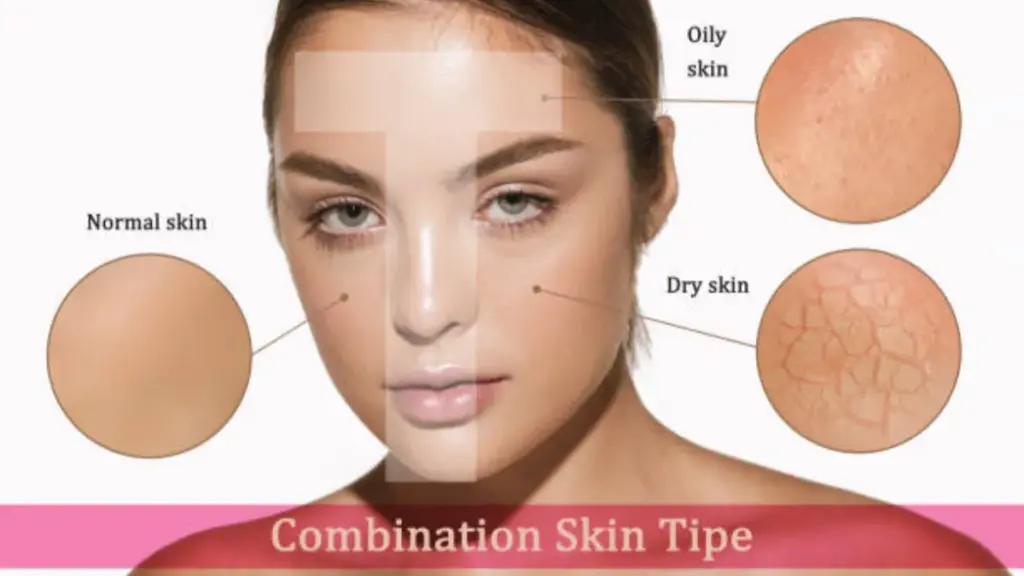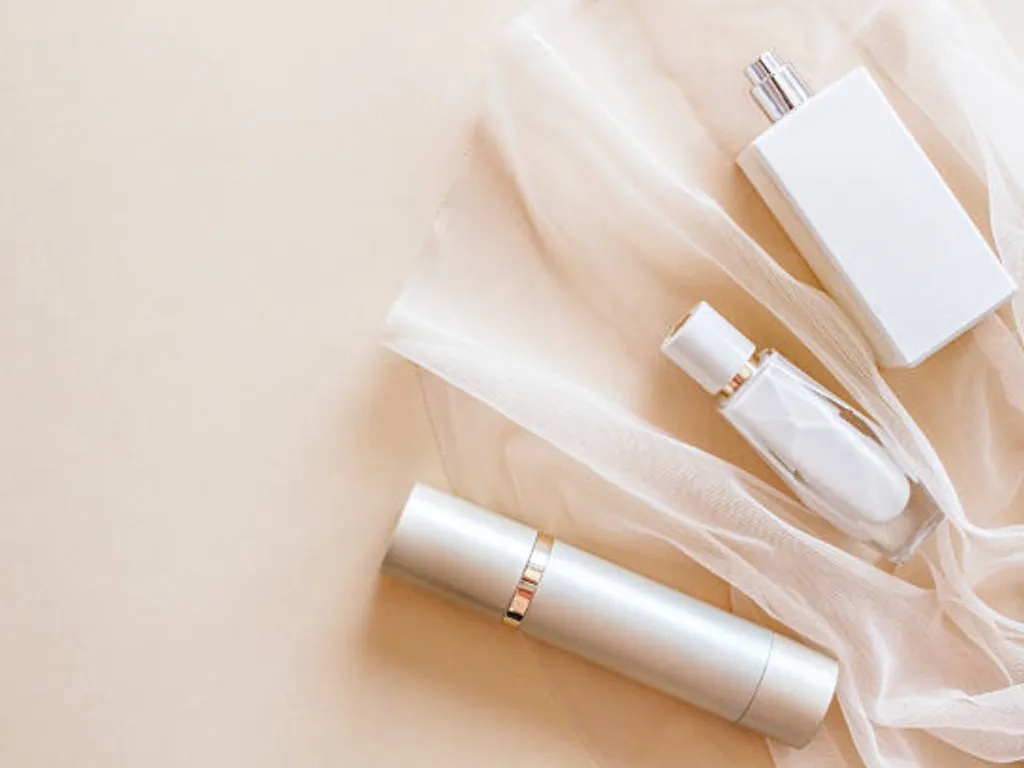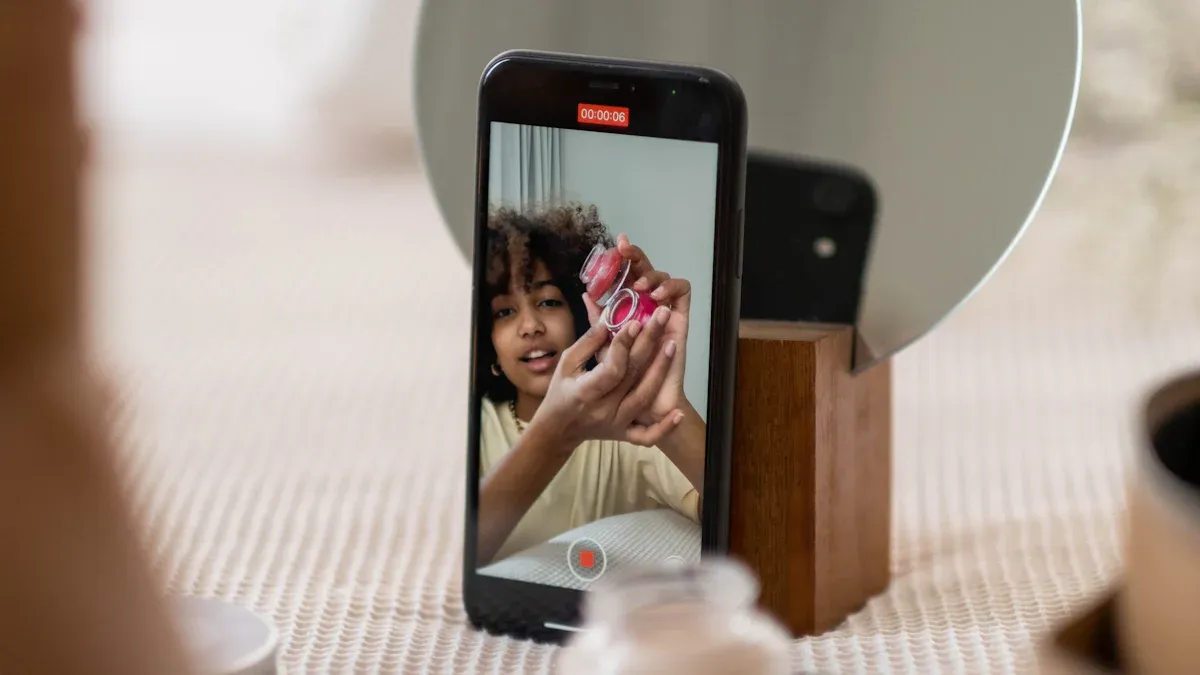
Technology is reshaping modern beauty manufacturing, bringing innovation and efficiency to the forefront. You can now enjoy hyper-personalized beauty tech solutions tailored to your needs. 例えば, AI analyzes your skin type and preferences to recommend products that align with your unique characteristics. Early adopters of AI-powered virtual try-ons have seen a 30% increase in customer engagement, proving how these advancements elevate your shopping experience. Sustainability also plays a growing role, as younger consumers demand eco-friendly practices. With tools like 3D printing and blockchain, the cosmetics industry continues to innovate and redefine data-driven beauty experiences.
Key Technologies Driving Change
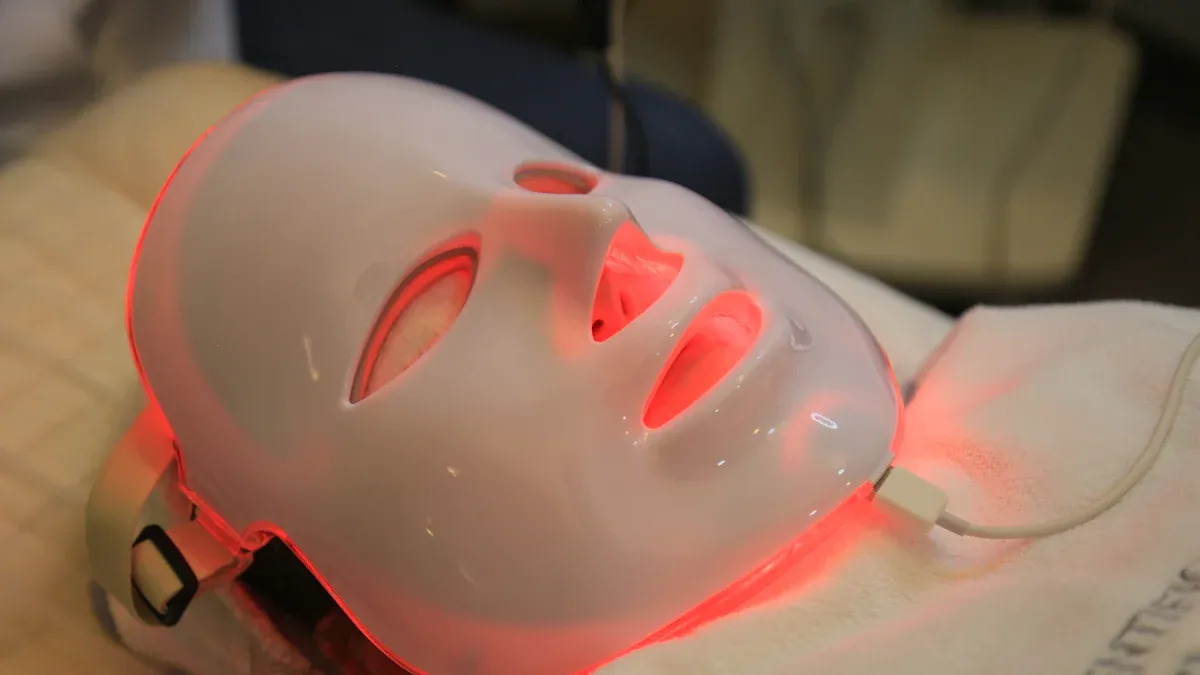
Artificial Intelligence (AI) in Beauty Tech
Artificial intelligence is revolutionizing the beauty industry by enabling smarter, faster, and more personalized solutions. AI-powered tools analyze vast amounts of data to predict trends, optimize formulations, and enhance production efficiency. 例えば, AI can simulate skin analysis, showing how different skincare ingredients interact with various skin types. This reduces the need for physical testing and accelerates product development timelines. You benefit from innovative products that reach the market faster than ever before.
AI also plays a critical role in predictive maintenance. By analyzing data from machinery and sensors, AI minimizes downtime and ensures smooth production schedules. This not only improves efficiency but also reduces costs for manufacturers. さらに, AI-powered tools like real-time facial recognition help brands offer hyper-personalized recommendations. These tools analyze your unique features to suggest products tailored to your needs, enhancing your shopping experience.
The impact of AI on the beauty industry is undeniable. で 2024, AI accounted for over 34% of market revenue, driven by its ability to deliver personalization and virtual try-ons. This demonstrates how artificial intelligence is shaping the future of beauty tech.
Augmented Reality and Virtual Try-Ons
拡張現実は、美容製品の買い物方法を変えています. Virtual try-ons allow you to experiment with makeup, hairstyles, and even skincare products without physically applying them. These AR-powered experiences make shopping more interactive and enjoyable. 例えば, virtual makeup filters let you see how a lipstick shade or foundation matches your skin tone in real time. This eliminates the guesswork and boosts your confidence in purchasing decisions.
Brands using AR have seen remarkable results. Virtual try-ons lead to a 94% higher conversion rate compared to traditional shopping experiences. Consumers are 1.6 times more likely to purchase products after using AR tools, and retailers report a 30% reduction in return rates. These metrics highlight the effectiveness of augmented reality in enhancing customer satisfaction and loyalty.
The demand for AR in beauty tech continues to grow. With a projected CAGR of 19.9%, AR is becoming a staple in the industry. Whether you’re exploring virtual makeup try-ons or testing skincare products, augmented reality ensures a seamless and personalized shopping journey.
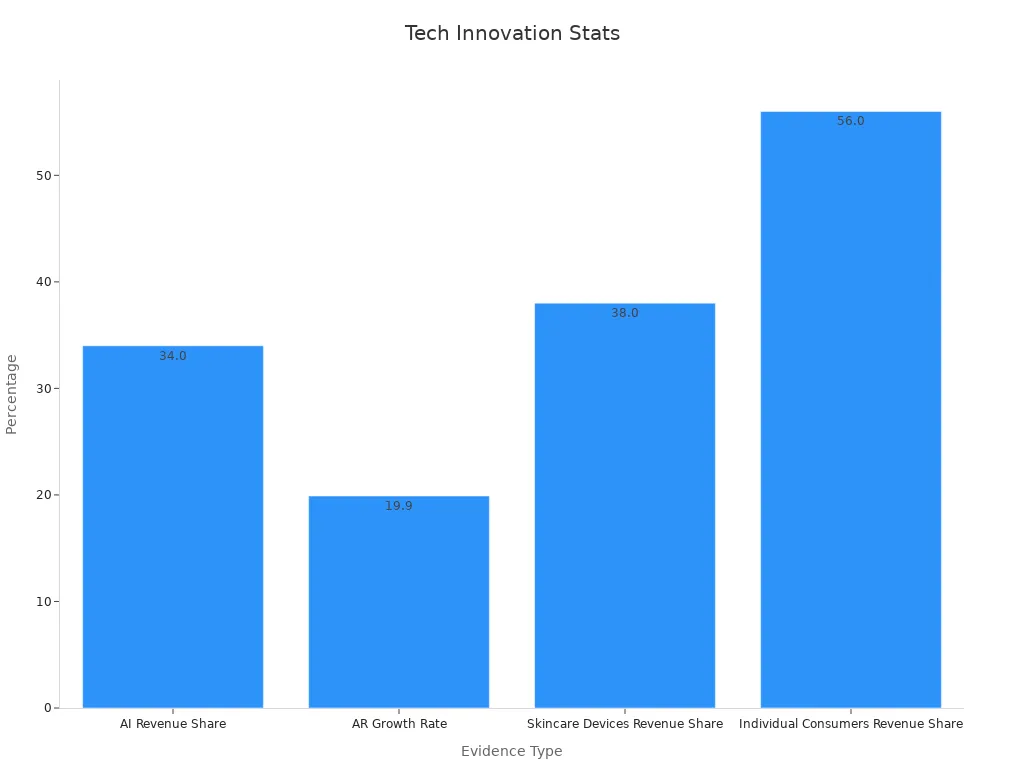
3D Printing in Modern Beauty Manufacturing
3D printing is redefining customization and speed in beauty manufacturing. This technology allows brands to create personalized products tailored to your unique needs. 例えば, L’Oréal uses 3D printing to develop skincare solutions that cater to individual skin types. This approach reflects a commitment to innovation and personalization.
The benefits of 3D printing extend beyond customization. It streamlines production processes, reducing waste and improving sustainability. By producing items on demand, manufacturers can minimize inventory costs and respond quickly to market trends. This ensures that you receive high-quality products that align with your preferences and values.
As 3D printing technology advances, its applications in beauty manufacturing will continue to expand. From custom formulations to eco-friendly packaging, this innovation is paving the way for a more efficient and sustainable future in the beauty industry.
Blockchain for Supply Chain Transparency
Blockchain technology is transforming supply chain transparency in beauty manufacturing. It provides a secure and decentralized way to track every step of the production process. You can now verify the origins of ingredients, ensure product authenticity, and gain insights into environmental impacts—all with a simple scan.
How Blockchain Enhances Transparency
Blockchain creates a digital ledger that records every transaction in the supply chain. This ledger is immutable, meaning no one can alter the data once it’s recorded. あなたのために, this means greater trust in the products you purchase. Brands use blockchain to share detailed information about sourcing, manufacturing, and distribution, giving you confidence in their ethical practices.
Real-World Applications in Beauty Manufacturing
Several beauty brands have adopted blockchain to improve transparency. Here’s how they’re using it:
ブランド | Initiative Description | Impact on Transparency |
|---|---|---|
L’Oréal | Utilizes blockchain to trace ingredient sourcing through QR codes on packaging. | Allows consumers to verify ingredient origins and environmental impact. |
Estée Lauder | Partners with blockchain companies to verify product authenticity from manufacturing. | Ensures consumers receive genuine products, enhancing trust and brand loyalty. |
Unilever | Implements blockchain for real-time tracking of product movement in the supply chain. | Improves supply chain visibility, reduces waste, and enhances customer satisfaction. |
These initiatives show how blockchain empowers you to make informed decisions. When you scan a QR code on a product, you can instantly access details about its journey—from raw materials to the final product. This level of transparency builds trust and strengthens your connection with the brand.
Benefits for Consumers and Manufacturers
Blockchain benefits both consumers and manufacturers. あなたのために, it ensures that the products you buy are authentic and ethically sourced. For manufacturers, it reduces inefficiencies in the supply chain. Real-time tracking helps brands identify bottlenecks and optimize operations, leading to faster delivery times and lower costs.
ヒント: Look for brands that use blockchain technology to verify their supply chain. This ensures you’re supporting companies committed to ethical and sustainable practices.
Blockchain is more than just a tool for tracking. It’s a way to create a transparent and trustworthy beauty industry. As more brands adopt this technology, you’ll see a shift toward greater accountability and sustainability.
Applications in Beauty Manufacturing
Hyper-Personalized Product Recommendations
Hyper-personalized product recommendations are transforming how you discover skincare and beauty products. By leveraging AI-powered skin analysis, brands can now assess your unique skin type, 好み, and concerns. This technology enables personalized skincare suggestions that align with your specific needs, creating a tailored experience.
AI plays a pivotal role in this process. It analyzes vast datasets, including your purchase history, skin conditions, and even environmental factors like humidity. This allows brands to recommend customized skincare routines that deliver optimal results. 例えば, AI-powered skin analysis tools can identify whether your skin is oily, dry, or sensitive and suggest products accordingly.
The impact of hyper-personalized product recommendations extends beyond convenience. Studies show that personalized experiences can significantly boost customer satisfaction and loyalty.
A single-point improvement in customer experience scores can generate 以上 $1 billion in additional revenue.
Companies that enhance customer satisfaction by 20% often see a 15-25% increase in cross-sell rates.
Customers who enjoy positive experiences may spend up to 140% more than those with negative interactions.
These statistics highlight how personalization benefits both you and the brands you trust. When you receive tailored recommendations, you’re more likely to find products that work for you, enhancing your overall experience.
知っていましたか? After a five-star experience, consumers are 2.9 times more likely to trust a brand and three times more likely to recommend it to others.
Automated Quality Control in Production
Automation is revolutionizing quality control in beauty manufacturing. By integrating AI into production lines, brands can ensure that every product meets the highest quality standards. Automated systems monitor each stage of production, identifying defects and inconsistencies in real time.
AI-driven quality control offers several advantages. It reduces human error, accelerates production, and ensures consistent results. 例えば, AI can analyze product formulations to detect any deviations from the intended recipe. This guarantees that the final product maintains its quality and effectiveness.
Here’s how automation improves quality control metrics:
メトリック | 説明 | Impact on Quality Control |
|---|---|---|
Test Coverage | Measures the percentage of functionality tested by automated systems. | High coverage minimizes the risk of defects in production. |
Defect Density | Tracks the number of defects per unit of production. | Helps refine processes to eliminate critical issues. |
Test Execution Time | Monitors the time taken to complete quality checks. | Faster execution ensures quicker issue resolution. |
Bug Detection Rate | Measures the rate at which defects are identified. | Higher rates improve overall product quality. |
Test Automation ROI | Evaluates the return on investment from automation efforts. | Guides resource allocation for better testing strategies. |
These metrics demonstrate how automation enhances efficiency and ensures that you receive high-quality products. By reducing error rates and streamlining production, brands can deliver reliable and effective solutions.
Sustainable Manufacturing Practices
Sustainability is becoming a cornerstone of modern beauty manufacturing. Brands are adopting eco-friendly practices to minimize their environmental impact while meeting your expectations for ethical products. Advanced technologies like AI and 3D printing play a crucial role in achieving these goals.
AI optimizes resource usage by predicting demand and reducing waste. 例えば, it can analyze production data to determine the exact amount of raw materials needed, preventing overproduction. 同様に, 3D printing enables on-demand manufacturing, which eliminates excess inventory and reduces waste.
Several environmental performance indicators validate these sustainable practices:
Indicator | 説明 |
|---|---|
Biobased Content Certification | Confirms the percentage of biobased materials in products. |
生分解性 | Ensures that products can decompose naturally without harming the environment. |
Life Cycle Assessment | Evaluates the environmental impact of a product throughout its life cycle. |
Recycled Content Certification | Verifies the use of recycled materials in manufacturing. |
Responsible Minerals Initiative | Ensures ethical sourcing of minerals used in products. |
These certifications and assessments provide transparency, allowing you to make informed choices. When you choose products from brands that prioritize sustainability, you contribute to a greener future.
ヒント: Look for products with certifications like Biobased Content or Recycled Content to support sustainable practices.
Sustainable manufacturing practices not only benefit the planet but also align with your values as a conscious consumer. By embracing these innovations, the beauty industry is paving the way for a more ethical and environmentally friendly future.
Enhancing Supply Chain Efficiency
Efficient supply chains are the backbone of modern beauty manufacturing. Technology has transformed how brands manage logistics, inventory, and production, ensuring that you receive high-quality products faster and more reliably. By integrating advanced tools, companies can streamline operations, コストを削減する, and meet your expectations for timely delivery.
How Technology Optimizes Supply Chains
Several technologies play a key role in improving supply chain efficiency. These innovations help manufacturers address challenges like delays, waste, and lack of transparency. Here’s how they make a difference:
Automation and Robotics: Automated systems handle repetitive tasks, such as packaging and sorting, with precision. This reduces reliance on manual labor and speeds up production. 例えば, robotic arms can assemble products faster than human workers, 一貫した品質を確保します.
Predictive Analytics: Data-driven forecasts allow brands to anticipate demand and adjust inventory levels. This minimizes overstocking or shortages, ensuring that you always find the products you need.
モノのインターネット (IoT): IoT devices monitor inventory and logistics in real time. Sensors track shipments, identify bottlenecks, and provide updates on delivery status. This level of visibility ensures smoother operations.
Blockchain Technology: Blockchain creates a transparent record of every step in the supply chain. You can verify the authenticity of products and trace their journey from raw materials to store shelves.
These tools not only enhance efficiency but also build trust by ensuring that products meet ethical and quality standards.
Benefits of Digital Transformation
Digital transformation has revolutionized supply chain management in the beauty industry. By adopting technologies like AI and machine learning, brands can make smarter decisions and respond quickly to market changes. Here are some key benefits:
Improved Visibility: Digital tools provide a clear view of the entire supply chain, from sourcing to delivery. This helps brands identify inefficiencies and resolve them promptly.
Enhanced Decision-Making: Advanced analytics enable manufacturers to predict trends and adjust strategies. 例えば, AI can analyze sales data to determine which products are in high demand.
Increased Resilience: Technology helps supply chains adapt to disruptions, such as raw material shortages or shipping delays. This ensures that you receive products without unnecessary delays.
ヒント: When choosing beauty products, look for brands that embrace digital transformation. These companies are more likely to deliver reliable and sustainable solutions.
Continuous Improvement in Supply Chains
The beauty industry constantly evolves to meet your needs. Manufacturers use technology to refine their supply chain practices and stay ahead of market demands. Here’s how they achieve continuous improvement:
Practice | 説明 |
|---|---|
Adoption of New Tools | Brands implement AI, machine learning, and automation to enhance efficiency. |
Real-Time Monitoring | IoT devices track inventory and logistics, ensuring smooth operations. |
Sustainability Initiatives | Companies optimize processes to reduce waste and environmental impact. |
These efforts ensure that supply chains remain efficient, flexible, and aligned with your expectations.
Why It Matters to You
Efficient supply chains directly impact your experience as a consumer. When brands optimize their operations, you benefit from:
Faster Delivery: Products reach store shelves or your doorstep more quickly.
Consistent Quality: Automation ensures that every item meets high standards.
Transparency: Blockchain and IoT provide insights into how products are made and delivered.
By leveraging technology, beauty manufacturers create a seamless experience for you while promoting sustainability and innovation. As these advancements continue, you can expect even greater convenience and reliability in the future.
Benefits and Challenges
Increased Efficiency and Cost Savings
Technology has revolutionized beauty manufacturing by improving efficiency and reducing costs. Automated systems streamline production processes, ensuring consistent quality and faster turnaround times. 例えば, integrating AI into supply chain logistics helps brands manage imports more effectively, reducing overhead expenses. Predictive maintenance powered by AI minimizes machinery downtime by up to 20%, extending equipment lifespan and cutting repair costs.
Sustainability also plays a role in cost savings. Brands that invest in sustainable suppliers benefit from long-term reliability and reduced waste. Streamlined quality control processes further minimize rework expenses, ensuring that every product meets high standards. These advancements not only save money but also enhance your experience as a customer by delivering high-quality skincare products more efficiently.
メトリック | 価値 |
|---|---|
15% | |
Production efficiency yield | 95% |
Waste reduction | 30% |
These metrics highlight how technology-driven manufacturing benefits both the environment and your wallet.
Enhanced Inclusivity and Personalization
Advanced technologies like AI and machine learning have made beauty products more inclusive and personalized. AI analyzes your unique preferences, スキンタイプ, and even genetic predispositions to recommend tailored skincare solutions. This hyper-personalization ensures that you receive products designed specifically for your needs, enhancing trust and satisfaction.
Inclusivity has also improved with innovations like 3D printing and augmented reality. 3D printing enables on-demand production of personalized beauty products, reducing waste and catering to diverse consumer identities. Augmented reality enhances your shopping experience by allowing virtual try-ons, helping you make informed decisions. These technologies empower you to find products that align with your lifestyle and preferences.
DNA analysis creates highly customized skincare solutions based on genetic factors.
AI-powered tools recommend products that suit your skin type and concerns.
Virtual try-ons make online shopping more interactive and enjoyable.
These advancements demonstrate how technology fosters inclusivity and personalization, ensuring that everyone feels represented in the beauty industry.
Ethical Concerns and Data Privacy
While technology offers many benefits, it also raises ethical concerns and data privacy challenges. AI tools in beauty tech must account for diverse skin types and avoid biases that could lead to discrimination. 例えば, some AI systems have shown biases based on race, ethnicity, or gender, highlighting the need for fairness and transparency.
Data privacy is another critical issue. AI systems collect vast amounts of personal information to provide personalized recommendations. Ensuring that this data remains secure and complies with privacy laws is essential. Ethical principles like accountability and transparency guide the development of AI technologies, ensuring they respect your privacy and rights.
Brands must address these challenges to maintain your trust. By prioritizing ethical practices and robust data protection measures, they can create a safer and more inclusive beauty industry.
Balancing Innovation with Sustainability
The beauty industry is finding creative ways to balance rapid innovation with sustainability. As a consumer, you may notice brands adopting practices that reduce environmental impact while still delivering cutting-edge products. This shift reflects a growing demand for eco-conscious solutions, 特にミレニアル世代とZ世代の間で.
One major focus is on packaging. Many companies now use biodegradable materials and refillable containers. These options not only reduce waste but also align with your values as a conscious shopper. 例えば, refillable lipstick cases and compostable skincare jars are becoming more common. These innovations make it easier for you to support sustainable choices without sacrificing quality.
Brands are also rethinking product formulations. Minimalist and waterless products are gaining popularity. By removing water from formulations, companies save resources and create more concentrated products. This means you get effective solutions that last longer and use fewer ingredients. Green chemistry is another game-changer. It minimizes harmful byproducts during production, ensuring that the manufacturing process is safer for the planet.
Here are some strategies beauty brands are using to balance innovation with sustainability:
Developing eco-friendly packaging, such as biodegradable and refillable options.
Creating waterless and minimalist formulations to conserve resources.
Using biotechnology and AI to design sustainable products.
Adopting circular economy practices to reduce waste and improve efficiency.
Transparency also plays a key role. Many brands now share details about their sustainability efforts, building trust with consumers like you. When you see a company openly discussing its eco-friendly practices, it becomes easier to make informed decisions.
By embracing these strategies, the beauty industry proves that innovation and sustainability can go hand in hand. As these practices become the norm, you can expect more products that meet your needs while protecting the environment. 🌱
Future Trends in Beauty Manufacturing
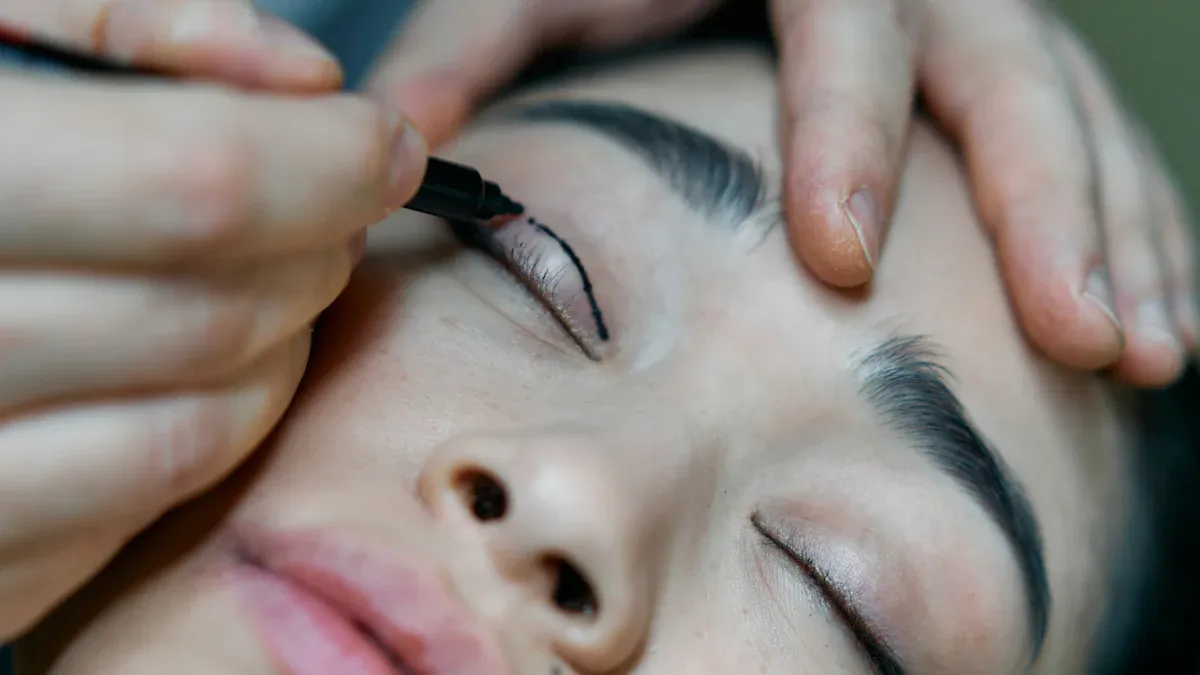
Integration with the Metaverse
The metaverse is revolutionizing how you interact with beauty brands. This virtual world allows you to explore products, attend events, and even consult with experts—all from the comfort of your home. Imagine walking through a digital store, trying on makeup using VR, and purchasing items with just a click. The metaverse for beauty is creating immersive experiences that blend technology with creativity.
Brands are already leveraging this trend. 例えば, some companies host virtual fashion shows or product launches in the metaverse. These events let you engage with their offerings in real-time. The beauty industry, projected to grow to $580 10億 2027, is embracing this shift to meet your evolving expectations. With e-commerce growing at 12% 毎年, the metaverse offers a new way to shop and connect with brands.
As the metaverse expands, you can expect even more personalized experiences. AI will play a key role in analyzing your preferences and tailoring virtual interactions. This combination of AI and VR ensures that your journey in the metaverse feels unique and engaging.
Wearable Beauty Devices
Wearable beauty devices are transforming how you care for your skin. これらのガジェット, designed to monitor and improve your beauty routine, use advanced technology to deliver real-time insights. 例えば, some devices analyze your skin’s hydration levels and recommend products to address specific concerns. Others track UV exposure, helping you protect your skin from harmful rays.
The market for wearable beauty devices is growing rapidly, with an annual growth rate of 18.8%. These innovations empower you to take control of your skincare routine. By providing accurate data, they help you make informed decisions about the products you use. This trend reflects a broader shift toward personalized and tech-driven beauty solutions.
AI-Driven Predictive Analytics
AI-driven predictive analytics is reshaping beauty manufacturing by improving demand forecasting. This technology analyzes historical sales data, social media trends, and even website traffic to predict what products you’ll want next. 例えば, AI can identify seasonal trends, helping brands stock the right items at the right time.
The benefits of predictive analytics are clear. Metrics like MAPE (Mean Absolute Percentage Error) measure how accurately forecasts match actual demand. Real-time adjustments allow brands to respond quickly to market changes, ensuring you always find what you need. According to the Manufacturing Leadership Council, 70% of manufacturers believe AI will significantly enhance performance, yet only 22% currently track its impact. This highlights the potential for growth in this area.
By adopting AI-driven analytics, beauty brands can streamline production, 無駄を減らす, and deliver products faster. あなたのために, this means better availability and more tailored options.
Smart Manufacturing with IoT and Robotics
Smart manufacturing is transforming beauty production by integrating IoT (モノのインターネット) and robotics. These technologies improve efficiency, 無駄を減らす, and enhance product quality, making the manufacturing process faster and more reliable.
IoT connects devices and systems within manufacturing plants, allowing real-time monitoring and data collection. Sensors track production performance, identify bottlenecks, and optimize resource allocation. 例えば, IIoT (Industrial Internet of Things) sensors streamline processes and ensure consistent product quality. This visibility helps manufacturers reduce waste and save costs while maintaining high standards.
Robotics plays a key role in automating repetitive tasks. Machines handle packaging, sorting, and assembly with precision, reducing the need for human intervention. The 10Beauty automated manicure machine is a great example. It performs a comprehensive five-step process, enhancing operational efficiency. You can even customize the experience through a mobile app, making the process seamless and personalized.
ヒント: Robotics not only speeds up production but also ensures consistent results, giving you high-quality products every time.
IoT and robotics also improve quality control. Automated systems detect defects during production, ensuring that only flawless products reach the market. This reduces rework and saves time, allowing manufacturers to focus on innovation. With these technologies, beauty brands can meet your expectations for reliable and sustainable solutions.
The adoption of IoT and robotics in beauty manufacturing is growing rapidly. These advancements pave the way for smarter, greener production methods. As a consumer, you benefit from faster delivery, better quality, and eco-friendly practices that align with your values. 🌟
Technology is reshaping modern beauty manufacturing, offering you unparalleled opportunities to experience personalized skincare solutions and eco-friendly practices. Advanced tools like artificial intelligence and augmented reality have revolutionized how you discover and interact with beauty products. 例えば, brands like Sephora and L’Oréal use AR to enhance your online shopping experience, while companies such as Function of Beauty deliver customized skincare tailored to your needs. These innovations not only improve your satisfaction but also foster long-term brand loyalty.
Despite challenges like ethical concerns and data privacy, the benefits of embracing technology far outweigh the drawbacks. The beauty industry continues to grow, driven by advancements in biotechnology and nanotechnology that meet your demand for safer, more effective skincare options. Companies like Oully exemplify how leveraging cutting-edge technology can help brands thrive in a competitive market. With a commitment to sustainability and innovation, Oully ensures you receive high-quality products that align with your values.
注記: The rise of e-commerce and personalized beauty solutions highlights how technology is transforming the industry, making it more accessible and inclusive for you.
よくある質問
What is beauty tech, and how does it impact you?
Beauty tech refers to the use of advanced technologies like AI, ar, and 3D printing in the beauty industry. It enhances your experience by offering personalized products, virtual try-ons, and sustainable solutions, making beauty more accessible and innovative.
How does AI improve beauty product recommendations?
AI analyzes your skin type, 好み, and environmental factors to suggest tailored products. This ensures you receive solutions that match your unique needs, improving satisfaction and helping you make informed choices.
ヒント: Try brands that use AI-powered tools for hyper-personalized skincare routines!
Are sustainable beauty products better for the environment?
はい! Sustainable beauty products use eco-friendly materials, 無駄を減らす, and often come in biodegradable or refillable packaging. These practices help protect the planet while aligning with your values as a conscious consumer.
What role does blockchain play in beauty manufacturing?
Blockchain ensures transparency by tracking every step of the supply chain. You can verify ingredient origins, product authenticity, and ethical practices with a simple scan, building trust in the brands you choose.
Can wearable beauty devices really improve your skincare routine?
絶対に! Wearable devices provide real-time insights into your skin’s condition, such as hydration or UV exposure. These gadgets help you make smarter decisions about your skincare, ensuring better results over time.
注記: Look for devices that sync with apps for a more interactive experience.

